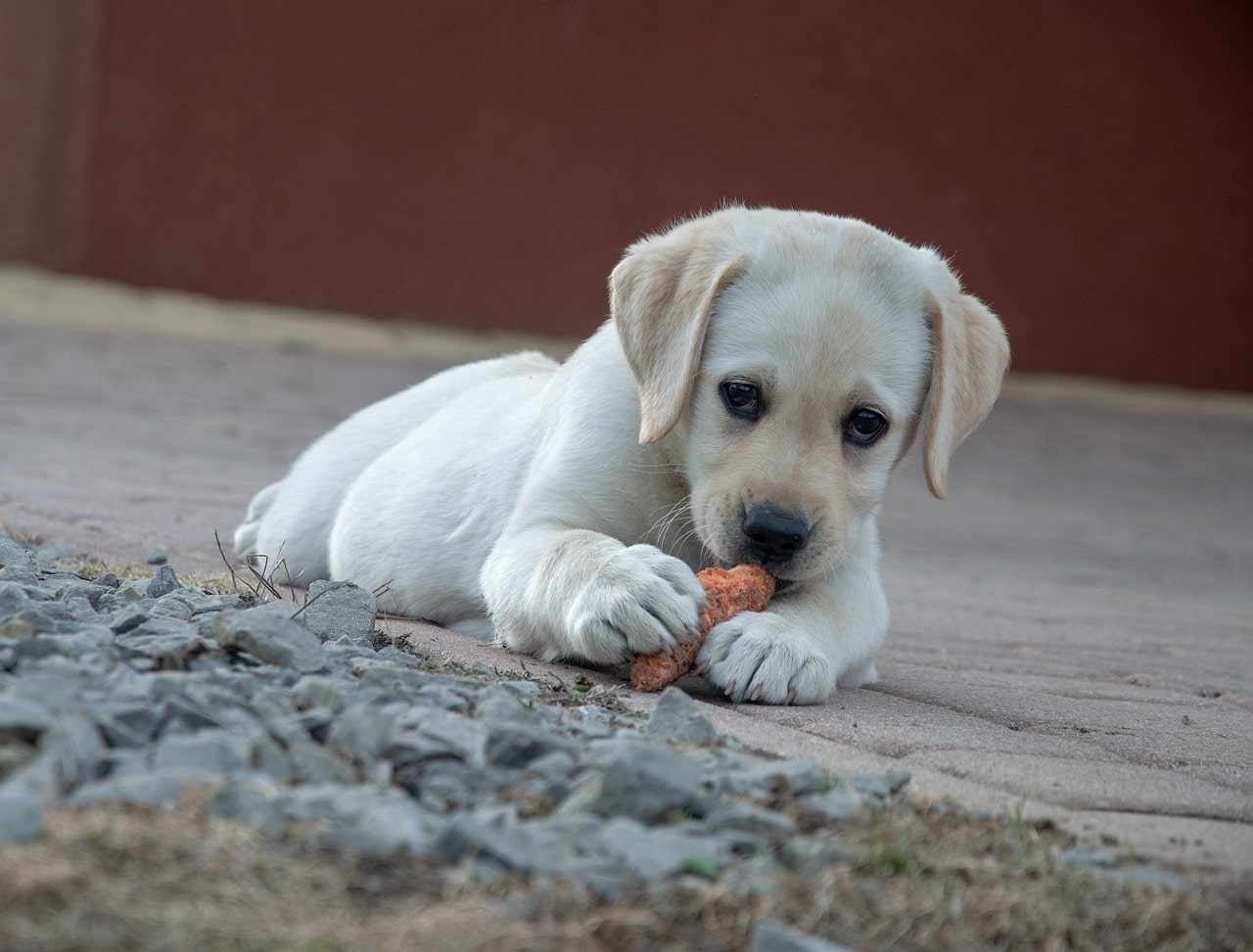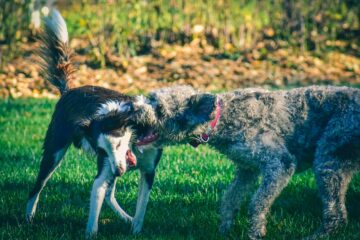Embarking on a leisurely stroll with your beloved canine companion is a cornerstone of the joyful bond shared between pet owners and their furry friends.
However, if your dog has developed the rather inconvenient habit of munching on anything and everything during walks, it can swiftly turn what should be a pleasant outing into a somewhat exasperating experience.
Fear not!
This comprehensive guide is here to provide you with practical and effective strategies on How to Stop Dog Eating Everything on Walks.
These tips will empower you to regain control and ensure a safer and more enjoyable walking experience for both you and your canine companion.
Table of Contents
How to stop your dog eating everything on walks?

1] Understand the Why
Embarking on a journey to comprehend why your dog is drawn to eating everything during walks is essential.
Dogs exhibit this behavior for various reasons, including boredom, curiosity, or the allure of new scents.
Observing and understanding your dog’s motivations is the initial step toward effective intervention.
By recognizing the underlying cause, you can tailor your approach to address their specific needs and tendencies during walks.
2] Bring High-Value Treats
Arming yourself with a stash of high-value treats serves as a powerful tool to redirect your dog’s attention.
When your dog displays interest in something they shouldn’t be eating, offering a delicious alternative provides a tempting distraction.
This not only breaks the habit of scavenging but also reinforces positive behavior.
High-value treats should be especially enticing, ensuring they capture your dog’s attention amid potential distractions during walks.
Tip: “Break the habit and reinforce positive behavior during walks.”
3] Master the “Leave It” Command
Teaching your dog the “leave it” command is a valuable asset in redirecting their focus during walks.
This versatile command becomes a handy tool to guide your dog away from enticing but inappropriate items.
Consistent practice in controlled environments, gradually increasing complexity, will enhance the effectiveness of the “leave it” command during outdoor excursions.
Positive reinforcement and rewards further solidify your dog’s understanding of this crucial directive.
4] Use Gentle Leash Guidance
Guiding your dog gently with the leash is a non-confrontational method to steer them away from undesirable items.
It’s crucial to avoid yanking or using force, as this can create anxiety or fear.
Gentle leash guidance, coupled with positive reinforcement, helps your dog associate the act with avoiding unwanted snacks.
Over time, this positive association reinforces better behavior during walks.
• Gently guide your dog with the leash to steer away from undesirable items • Avoid yanking or using force to prevent anxiety or fear • Positive association reinforces better behavior during walks over time
5] Employ Puzzle Toys
Introducing puzzle toys during walks serves the dual purpose of mental stimulation and diversion.
These toys not only entertain your dog but also redirect their attention away from scavenging.
Incorporating treats or kibble inside the toys adds an extra layer of challenge, engaging your dog’s cognitive abilities.
Puzzle toys are an excellent way to make walks more enriching, focusing your dog’s energy on constructive and mentally stimulating activities.
6] Establish a Consistent Walking Routine
Dogs thrive on routine and predictability.
Establishing a consistent walking routine is instrumental in helping your dog concentrate on the walk itself rather than searching for snacks.
Consistent routes and walking times reduce the novelty of the environment, minimizing the urge to scavenge.
The predictability of the routine provides a sense of security for your dog, allowing them to relax and enjoy the walk without fixating on potential edibles.
Tip: “Consistency reduces the novelty of the environment, minimizing the urge to scavenge.”
7] Avoid Hungry Walks
Feeding your dog before walks is a strategic approach to ensure they are not hungry and less likely to engage in indiscriminate eating.
A satisfied stomach reduces the allure of random items, making the walk more about exercise and less about foraging.
Timing meals appropriately contributes to a more relaxed and focused walk, reducing the likelihood of your dog being enticed by various scents along the way.
8] Train the “Drop It” Command
Teaching your dog the “drop it” command is crucial for situations when they’ve already picked up something undesirable.
A prompt response to this command ensures your dog releases the item safely, preventing potential ingestion of harmful substances.
Consistent training in controlled settings and during walks reinforces your dog’s understanding of the command.
Positive reinforcement, such as treats and praise, encourages a swift and reliable response.
Tip: “Prompt responses ensure safe release and prevent ingestion of harmful substances.”
9] Opt for Dog-Friendly Routes
Selecting walking routes that are dog-friendly and less littered with tempting items is a proactive measure.
Avoiding areas where your dog has a history of intense scavenging reduces the likelihood of encountering items they find irresistible.
Opt for paths with fewer distractions, providing a safer and more controlled environment for your walks.
Thoughtful route selection contributes to a more enjoyable and focused walking experience.
10] Supervise Off-Leash Time
If your dog enjoys off-leash time, supervising them closely until scavenging habits are under control is prudent.
Gradually increasing freedom as they demonstrate better impulse control during walks ensures a smoother transition.
Close supervision allows you to intervene if needed, reinforcing positive behaviors and discouraging undesirable ones.
The gradual introduction of off-leash time aligns with your dog’s progress in curbing scavenging tendencies.
Tip: “Gradually increase freedom as your dog demonstrates better impulse control.”
11] Explore Natural Deterrents
Incorporating natural deterrents like citrus scents or diluted vinegar on items your dog tends to gravitate towards can be effective.
Dogs often dislike these scents, creating a mild aversion without causing harm.
Applying these deterrents to specific areas during walks communicates a signal to your dog that certain items are to be avoided.
12] Consult Your Vet
Sometimes, excessive scavenging can be linked to nutritional deficiencies.
Consulting your veterinarian is crucial to ensure your dog’s diet is well-balanced and meets their nutritional needs.
Addressing any underlying causes, such as nutritional imbalances or digestive issues, contributes to a holistic approach in curbing scavenging habits.
Your vet can provide tailored recommendations to support your dog’s overall health and well-being.
Tip: “Ensure your dog’s diet is well-balanced and meets their nutritional needs.”
13] Celebrate Good Behavior
Celebrating moments when your dog refrains from eating everything on walks is essential for reinforcing positive behavior.
Verbal praise, extra petting, or offering a favorite treat serves as positive reinforcement.
By associating good behavior with enjoyable rewards, you create an incentive for your dog to make better choices during walks.
14] Be Patient and Persistent
Curbing scavenging habits in your dog is a gradual process that requires patience and persistence.
Understand that behavioral changes take time and consistent effort. Celebrate progress, regardless of how small, and remain committed to the established strategies.
Consistency in your approach, combined with positive reinforcement, contributes to the gradual transformation of your dog’s behavior.
Embrace the evolving dynamics of your walks with your furry companion, appreciating each step towards more controlled and enjoyable outings.
In the journey of patience, walks become a canvas of progress, and every step is a brushstroke of positive change
How To Stop Your Dog Eating Everything On Walks: FAQs
Can dogs get sick from eating random items on walks?
Yes, dogs can get sick from ingesting harmful substances. It’s crucial to intervene and train your dog to avoid eating everything during walks to prevent potential health issues.
What if my dog is stubborn and won’t respond to commands?
If your dog is stubborn, consider enrolling in obedience training classes. Professional trainers can provide guidance and help address stubborn behaviors through structured training sessions.
How long does it take to see improvements in scavenging behavior?
The timeline varies for each dog, but consistent training efforts can lead to noticeable improvements within a few weeks. Patience and persistence are key factors in the training process.
Are certain breeds more prone to scavenging on walks?
While scavenging tendencies can vary among breeds, individual temperament and training play significant roles. Consistent training can effectively address scavenging behavior in any breed.

Conclusion:
Curbing the habit of How to Stop Dog Eating Everything on Walks is a journey toward safer and happier walks.
By implementing these practical strategies, you’ll help your pup develop better habits and enjoy your outings together.
Consistency and patience are your allies, so stay vigilant, celebrate small victories, and relish the newfound control over your dog’s dining choices during walks.
Here’s to many more carefree and enjoyable walks with your well-behaved canine companion!





